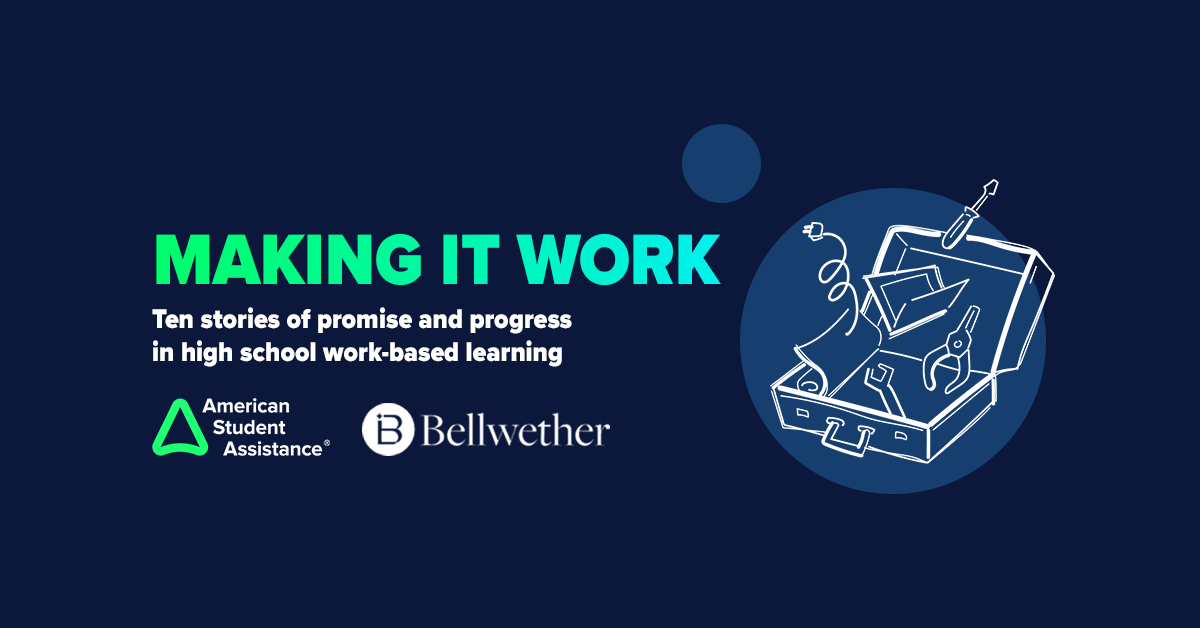In part three of our blog post series on best practices for youth work-based learning, we explore how some states are solving for the universal issues that can impede the widescale adoption of on-the-job learning experiences for high school students.
Our state-by-state research has found that while different regions can face unique challenges in implementing work-based learning for youth younger than 18, there are many common barriers that all states face, such as safety and liability issues, transportation to worksites in rural areas, and scheduling conflicts.
Often, states fail to identify barriers because they are not collecting enough data on their work-based learning programs. This can make it difficult to identify trends in work-based learning participation and understand how those trends might be driven by existing laws and policies that act as barriers to certain communities, districts, student groups, or employers.
But some states are actively working to identify obstacles and provide solutions. For example, one of the major barriers to work-based learning in New Jersey was ensuring students are participating in a safe working environment. In response, the state launched the New Jersey Safe Schools Project, a collaboration between the New Jersey Department of Education and Rutgers University, to mitigate liability concerns for schools and employers as well as improve the workplace conditions of students participating in work-based learning. This project has resulted in training sessions for educators and an alliance among the Occupational Safety and Health Administration, New Jersey Division of Wage and Hour Compliance, New Jersey Department of Labor, U.S. Department of Labor, New Jersey Department of Education, and Rutgers University, which meet four to six times per year to focus on student safety in work-based learning placements.
In South Carolina, efforts to overcome many of the common barriers to high school work-based learning have been years in the making – and are starting to see results. For example, a typical barrier is scheduling differences between schools. In South Carolina, students can study career and technical education courses at their comprehensive high schools, but some also receive supplemental CTE programs at separate Career and Technology Centers. These centers either operate as part of a larger school district or are independent, multi-district centers that provide CTE programs to students from districts that do not have their own career centers. Students who split time between a traditional high school and a career center often faced difficulties because the high school followed a bell or period schedule while the career center adhered to a block schedule, which reorganizes the school day into longer periods for in-depth learning.
“We started tackling scheduling differences 10 years ago and we are still tackling it today,” explains Kama Staton, Education Associate over work-based learning within the Division of College and Career Readiness at the Office of Career & Technical Education and Student Transition Services in the South Carolina Department of Education. “I can tell you this, though…10 years later, I am finally seeing some traction. I’m finally seeing building supervisors and superintendents who come into that role, say … if I make this change in the bell schedule or master schedule, how’s it going to affect our CTE students doing internships or clinicals?.”
Listen below for more on how Kama addressed schedule conflicts:
Another common barrier to work-based learning at the high school level is a lack of course credit for the experience. South Carolina has had a CTE work-based learning state-approved credit bearing course for each cluster of students in place for years. However, with work-based learning tied to the state’s accountability system and the state’s Seal of Distinction initiative, it was time to provide the same opportunities to all students. The state has begun to help districts build a course for non-CTE pathway students, centered around work-based learning such as internship and apprenticeship, where the student can get course credit. South Carolina has assisted many districts in writing course standards for a locally designed course and building in an employability soft skills credential (Microburst EmployABILITY Certification) to meet the demands of workforce needs, while also bringing business and industry representatives to sit on state standards committees, local advisory councils, and regular meetings with state and local stakeholders.
As in many other states, transportation to work-based learning job sites can be an especially difficult obstacle for students in South Carolina. “South Carolina is a smaller state, but we have some districts and schools that are so spread out from business, it might take 15-20 miles to get to a business that’s able to support work-based learning efforts for local school districts,” explains Staton. “Thus, we continue to allow transportation as an allowable expenditure into our Perkins V federal funds and State Education Improvement Act funds. It doesn’t cover students’ gas, but it does cover a district-provided bus. In addition, we do have some businesses in parts of our state that have their ‘business bus or shuttle’ pick up the students at the Career Center and get them back and forth. It’s not going to solve everything, but at least helps a lot of students who would not have a way to get to the job site.”Read more about how South Carolina is overcoming other common barriers to youth work-based learning in our new guide, High School Work-based Learning: Best Practices Designed to Improve Career Readiness Outcomes for Today’s Youth, which was recently featured in an article from K-12 Dive.com.




